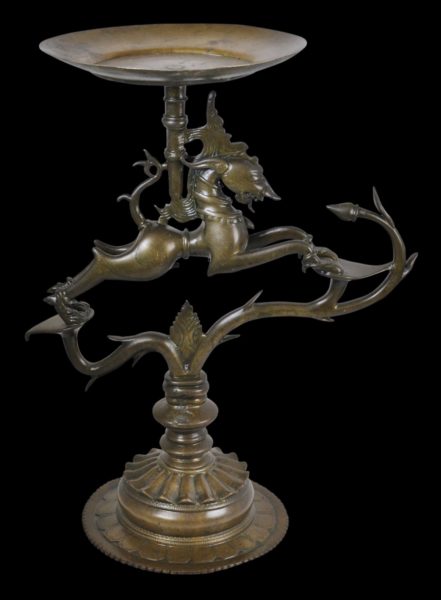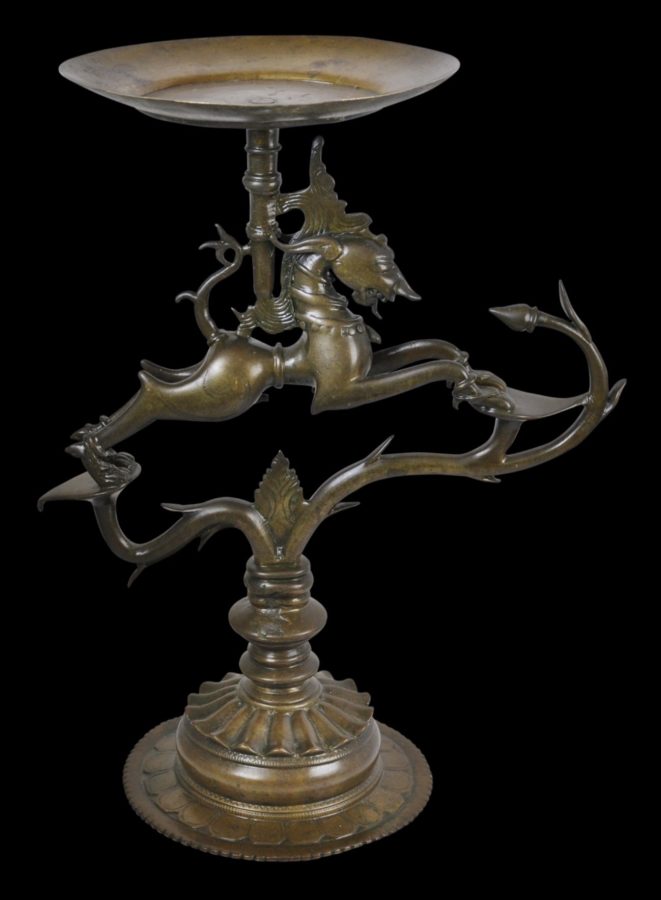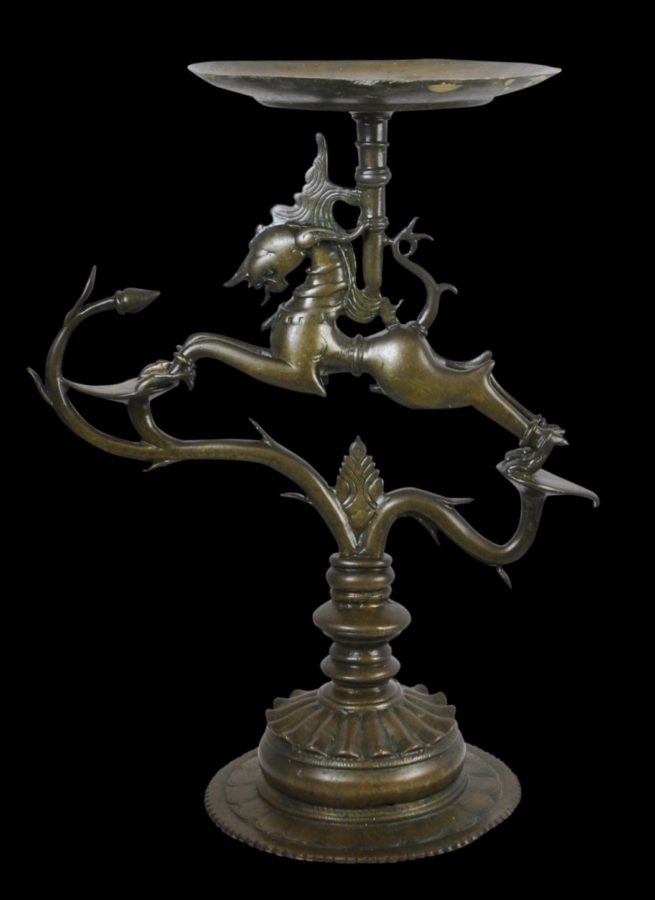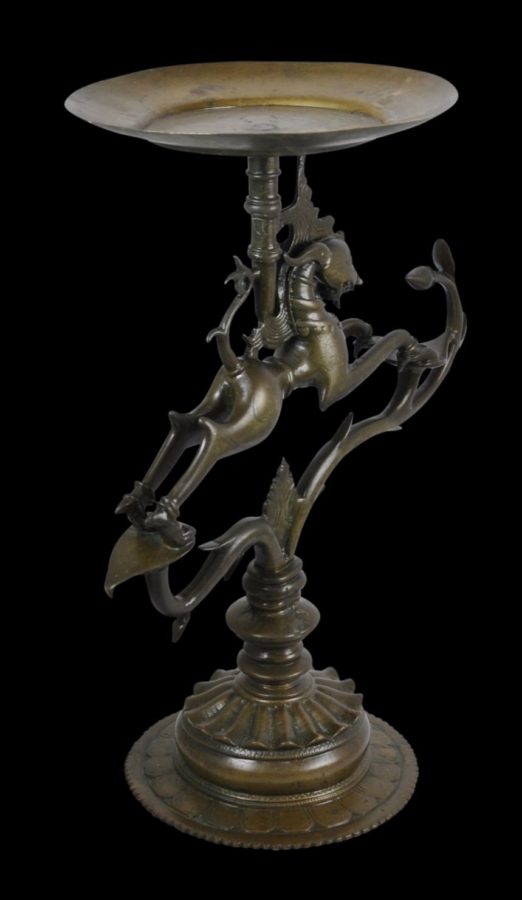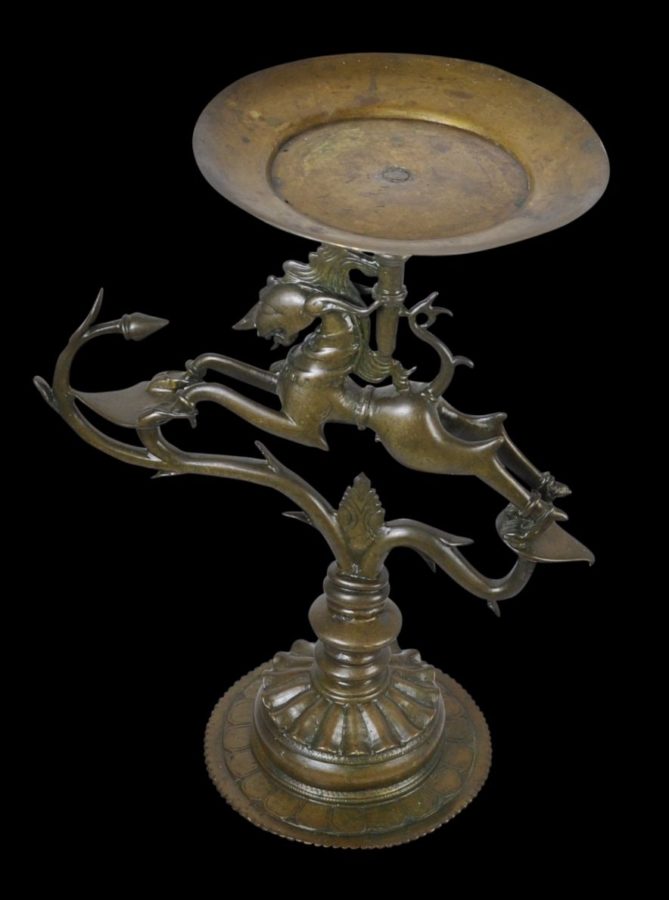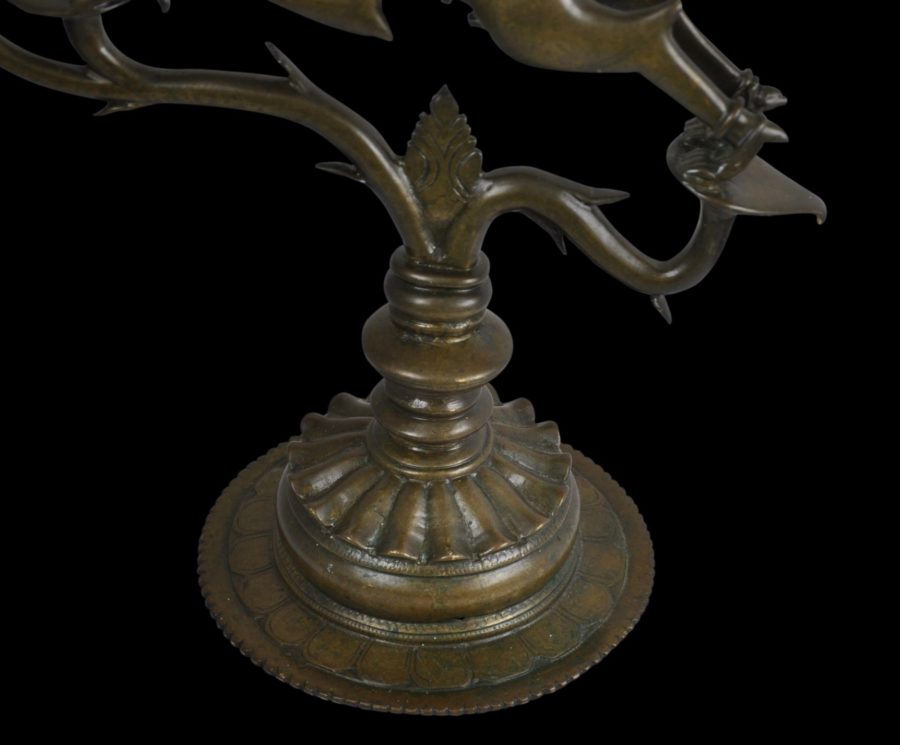This dynamically and finely cast ritual stand integrates the iconography of the lotus (buds, stems and flowers) with a heraldic-like rampant lion (singha). It rises from a tiered, well-cast lotus petal base and is topped with a dish or pan with a raised rim.
The stand would have been used as a salagrama stand, that is to hold a ritual aniconic form of Vishnu, most typically represented by a fossilised ammonite shell known as a shaligram stone. The fossilised ammonites are believed to embody the god Vishnu.
Fossilised ammonites come from Nepal, Mustang and elsewhere in the Himalayas. In Nepal, the most important source is the riverbed of the Kaligandaki River, which is one of the oldest, largest and most sacred rivers of Hinduism which flows down through Nepal, and is one of the biggest tributaries of Ganges River in India.
The stand would have been used on a Vaisnava household altar or in a temple.
A related example is illustrated in Aditi (1982, p. 93), and is attributed to 19th century Orissa
The stand here is well cast, and has a chocolate-brown patina. There are no losses, and the condition is very good.
References
Aditi, Festival of India, The Handicrafts and Handlooms Exports Corporation of India Ltd, 1982.


